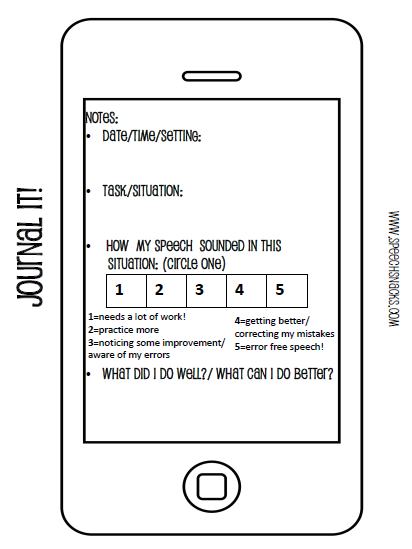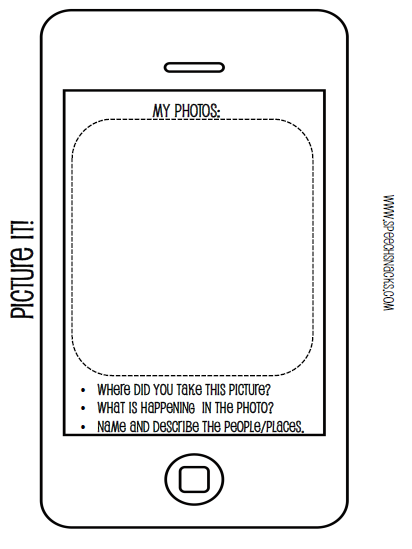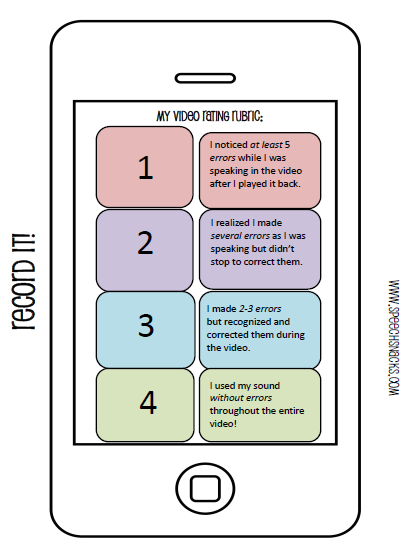It’s time for another great linky party and Crazy Speech World is talking all about carryover strategies! Generalization of speech sounds is such a challenge for so many students. Sure, our students can model and monitor when they are with us in the confines of the speech room, but using speech skills appropriately and consistently in the real world is a whole different ball game! Although many children have mastered their speech sounds before reaching middle school or high school age, others continue to require guidance in achieving complete success. By this age, motivation and interest to improve often decline. In some of those cases, their articulation is as good as it’s going to get, in other cases, a little extra push in the right direction will help them reach that finish line so that they can be released from services. So here’s my take on ways to improve generalization of speech/carryover with older students……
Fact #1: I work with the “big kids”
Fact #2: Kids LOVE technology!
Fact #3: Many of the kids I work with have their own cell phones, iPods, tablets and other such devices.
Fact #4: Many of the kids I work with have technology devices that are wayyyy better than mine!
Fact #5: I need to join the party and make a visit to my nearest cell phone store!
Like so many adults, so many kids are attached to their technology. While I’m not advocating that you encourage your students to text obsessively and spend hours on their portable devices, I do believe that it can be an effective way of getting them to make a conscious effort to monitor their speech in situations OUTSIDE the therapy setting. You would be amazed at the level of interest students take in getting a school-based assignment completed when it involves using their own personal devices!!
JOURNAL IT!
This activity should be done OUTSIDE of the therapy setting. Have your students use the “notes” section of their device (phone, tablet, iPod), to enter their thoughts about how they sounded at a specific time, place and situation outside of school. They should make note of their thoughts 3-4 times per week. They can even schedule an alert/reminder onto their calendar as a way to remember that they need to complete this task.
When they come to their therapy session, use this FREE rating scale to discuss or write about what they recorded on their device. If you work in a school (such as mine) that gives students permission to openly use their devices as a homework planner/organizer, then you can have them share the actual notes with you. With older kiddos, it’s very effective to communicate with them on this level. It allows them to connect their articulation with the real world.
“PICTURE” IT!
Using the camera feature of their device, students can take pictures of people, places, things, events that they find interesting and worth chatting about. Have them keep a “picture-a-day” album on their phone, ipod or tablet. They need to find someone to share their pictures with for one minute as they monitor their speech sound for consistency and accuracy. They can ask a parent, sibling, friend to listen to them as they talk about the pictures they have taken. When they come in to their next speech session, have them use this FREEBIE to sketch out one of the pictures and tell you all about it. (Again, if electronic devices are permitted in the school setting, ask them to show you the actual pictures.)
RECORD IT!
Kids love to record themselves saying and doing silly things. Channel some of that energy and humor by having them use the video feature on their device to record themselves. The video should last no longer than one minute. They can talk on any topic that they wish. Afterward they can review it and rate it. Have them give it a number from 1-5, depending on the clarity and number of errors they observed. They should share their short video with a parent , sibling or friend and ask them to honestly and constructively rate their observations as well. You can give them this FREEBIE rubric to use at home. Keep copies available in your therapy session and ask them to explain the short video they recorded and rate what they thought of their speech. Once again, if permitted to use their phones in school, ask them to share their video so you can rate it together.
So there you have it, ways to incorporate personal technology into carryover. Remember to tell your students that they need to be mature and appropriate when carrying out this assignment. It will hopefully teach responsibility as well as help them realize that their device can be used as an important learning tool!
What are your carryover strategies with older students? Check out Crazy Speech World’s linky party for tons of great ideas from SLP bloggers!
















What awesome ideas! I love it! Thanks for linking up 🙂
Impressed with your talent and creativity in the development of speech/language activities. Wonderful blog!